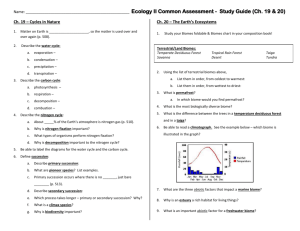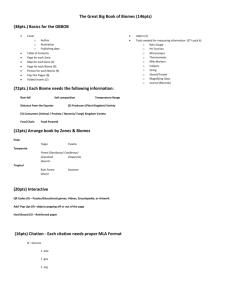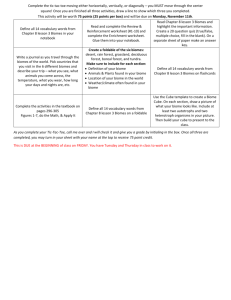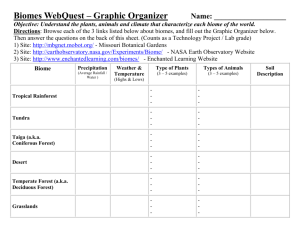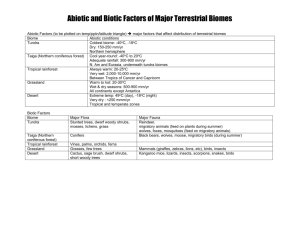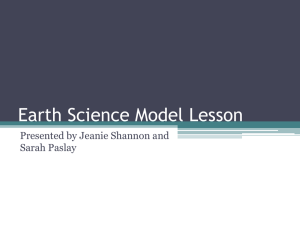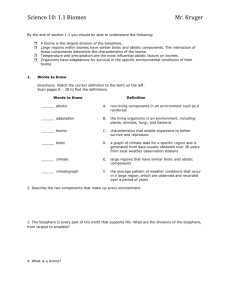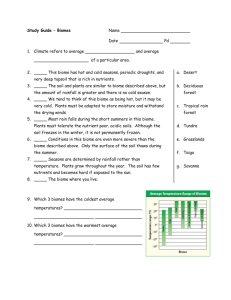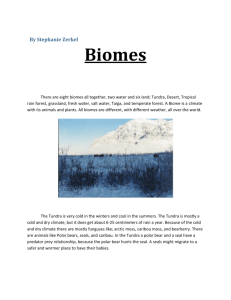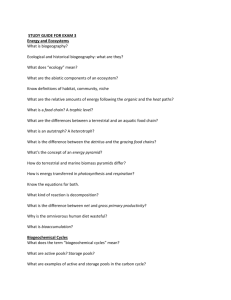Communities and Biomes
advertisement
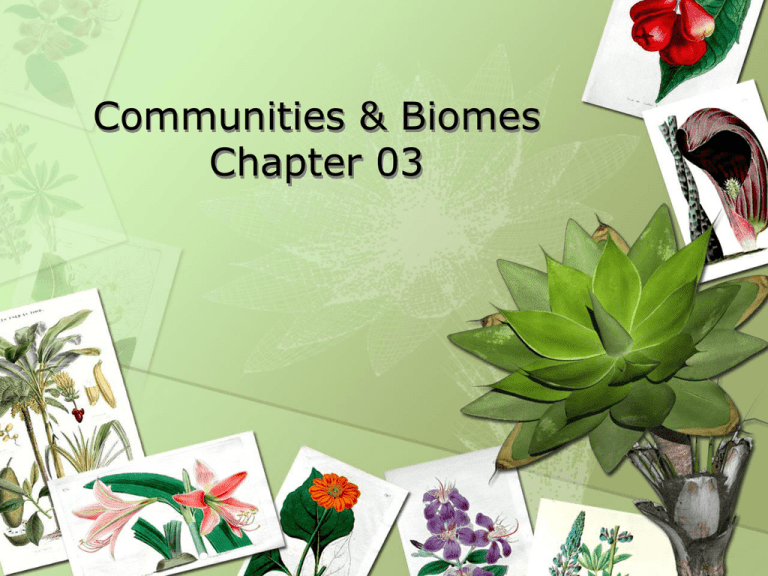
Communities & Biomes Chapter 03 Abiotic Influences • Communities are groups of populations of different species. • & the environment plays a big role in how big a community will be. Abiotic Influences • Food, water, temperature, and others can all limit a community’s ability to survive. • Therefore these are called Limiting Factors • If there is a lot a food in an area, but no water what will happen to the community? 1. Limiting Factors • Any biotic or abiotic factor that restricts the existence, numbers, reproduction, or distribution of organisms Examples • Sunlight, Climate, Temperature, Water, Nutrients/Food, Fire, Soil Chemistry, Space, Other organisms 2. Tolerance • the lower and upper limits that an organism can survive in. • (i.e. saltwater, temperature, oxygen levels, and any other limiting factors…) – A “range of tolerance” 3. Succession • Overtime communities change. • Natural changes and species replacements in a community are called SUCCESSION. • Two Types A. Primary Succession • Colonization of new land by communities of pioneer species (first organisms in an area). • Example: • After a volcanic lava flow. http://www.countrysideinfo.co.uk/successn/primary.htm B. Secondary Succession • Colonization after a natural disaster. • Example: • after a fire, flood, or mudslide http://www.countrysideinfo.co.uk/successn/second.htm Which type of success is which? How do you know? C. Climax Community Mature, stable community; Equilibrium has been reached. If a community is allowed to grow to the point where it is fairly stable, there is now, little or no change in species. Examples: sonoran desert, taiga, rainforest II. Biomes • Biomes are large groups of ecosystems that share the same type of climax community. • They are the Earth’s major life zones. Earth’s Biomes 1. Aquatic Biomes • freshwater biome • marine/saltwater/ocean biome a. Freshwater Biome --- low salt concentration — usually less than 1% Examples: Ponds and lakes Streams and rivers Wetlands b. Marine Biome o o o covers about ¾ of the Earth's surface algae supply most of our oxygen and absorb tons of carbon dioxide. Evaporation of the seawater provides rainwater for the land Examples: Oceans ,Coral reefs Estuaries 2. Desert Biome o o o o covers about 1/3 of the Earth's surface rainfall is less than 50 cm/year low and high altitudes specialized plants and animals Examples Hot and dry Semiarid Coastal Cold 3. Forest Biomes Tropical Temperate Taiga (Boreal) a. Tropical forest o o o o greatest species diversity only rainy and dry seasons 12 hours daylight always 20o-25oC b. Temperate forest o Well-defined seasons o with a distinct winter o Moderate climate o loose leaves annually, oExamples: oak, elm, maple o -30° C to 30° C c. Taiga forest (Boreal) o largest terrestrial biome o short, moist, warm summers & long, cold, and dry winters. o mostly conifers with needle-like leaves; o Examples: fir, spruce, and pine o precipitation is mostly snow 4. Grassland Biome o Mostly grasses rather than large shrubs or trees. o AKA – prairies or savannas o ideal for growing foods o rain in late spring and early summer o large temperature range/variation o Most have been converted into farms and grazing lands. 5. Tundra Biome o o o o o o coldest of all the biomes extremely low temperatures little precipitation very short growing seasons Low biotic diversity (little variety in life) Simple small plants/vegetation. Examples: Arctic tundra - polar – high latitude Alpine tundra –high altitude -Mtns.
